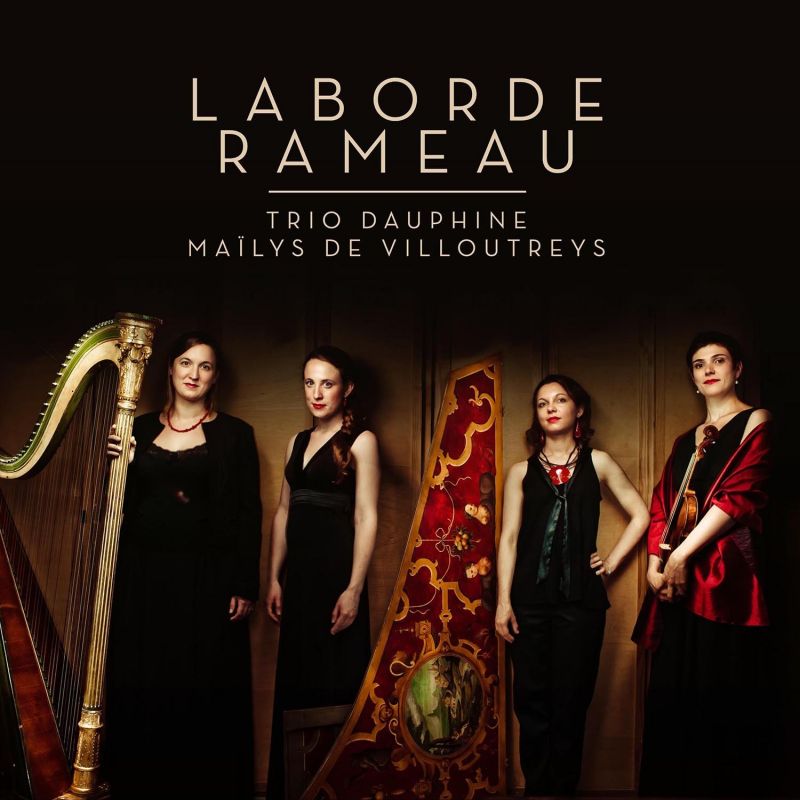LABORDE Extraits des Trois Recueils de Chansons
View record and artist detailsRecord and Artist Details
Composer or Director: Jean-Philippe Rameau, Francesco Petrini, Jean-Baptiste Antoine Forqueray le fils, Jean-Benjamin de Laborde
Genre:
Chamber
Label: Evidence Classics
Magazine Review Date: 05/2015
Media Format: CD or Download
Media Runtime: 72
Catalogue Number: EVCD008

Tracks:
| Composition | Artist Credit |
|---|---|
| Trois Recueils de Chansons avec accompagnement de harpe, de violon et de clavecin |
Jean-Benjamin de Laborde, Composer
Jean-Benjamin de Laborde, Composer Mailys de Villoutrey, Soprano Trio Dauphine |
| Sonate III pour harpe seule, dédiée à Mlle de Laborde |
Francesco Petrini, Composer
Clara Izambert, Harp Francesco Petrini, Composer |
| Concert No 2 |
Jean-Philippe Rameau, Composer
Jean-Philippe Rameau, Composer Trio Dauphine |
| 1st Suite, Movement: La Laborde |
Jean-Baptiste Antoine Forqueray le fils, Composer
Jean-Baptiste Antoine Forqueray le fils, Composer Trio Dauphine |
Author: Julie Anne Sadie
La Borde, who lost his head in the closing days of the French Revolution, is best known today for his four-volume Essai on music (1780). His chansons are small-scale musique de chambre, requiring the services of a skilled vocalist, violinist, harpist and harpsichordist. La Borde cast the violinist in the role of a second soprano and combined harp with harpsichord to produce a lively, resonant yet delicate accompaniment. His tunes are characterised by expressive upward intervals, such as the octaves in the lullaby ‘Dors, dors’, and sinuous diminutions as in ‘Lugubre nuit’. The rapport between singer and instrumentalists is always collaborative, and the beautifully shaped solo instrumental introductions and interludes, obbligatos and ornamentation enhance the exquisite pleasure of the music.
The Rameau and Forqueray items, chosen because of their connections with the La Borde family, belong to the Louis XV era and date from the 1740s. Marie van Rhijn performs Forqueray’s La Laborde with exceptional introspection. Possibly more contentious is Trio Dauphine’s arrangement of the Rameau Concert, which alters the essential balance between the players, turning a work for harpsichord and two concertante instruments into a work for solo violin and sumptuous plucked instrumental accompaniment.
Provocative? Mais oui! Pleasurable? Bien sûr!
Discover the world's largest classical music catalogue with Presto Music.

Gramophone Digital Club
- Digital Edition
- Digital Archive
- Reviews Database
- Full website access
From £8.75 / month
Subscribe
Gramophone Full Club
- Print Edition
- Digital Edition
- Digital Archive
- Reviews Database
- Full website access
From £11.00 / month
Subscribe
If you are a library, university or other organisation that would be interested in an institutional subscription to Gramophone please click here for further information.




